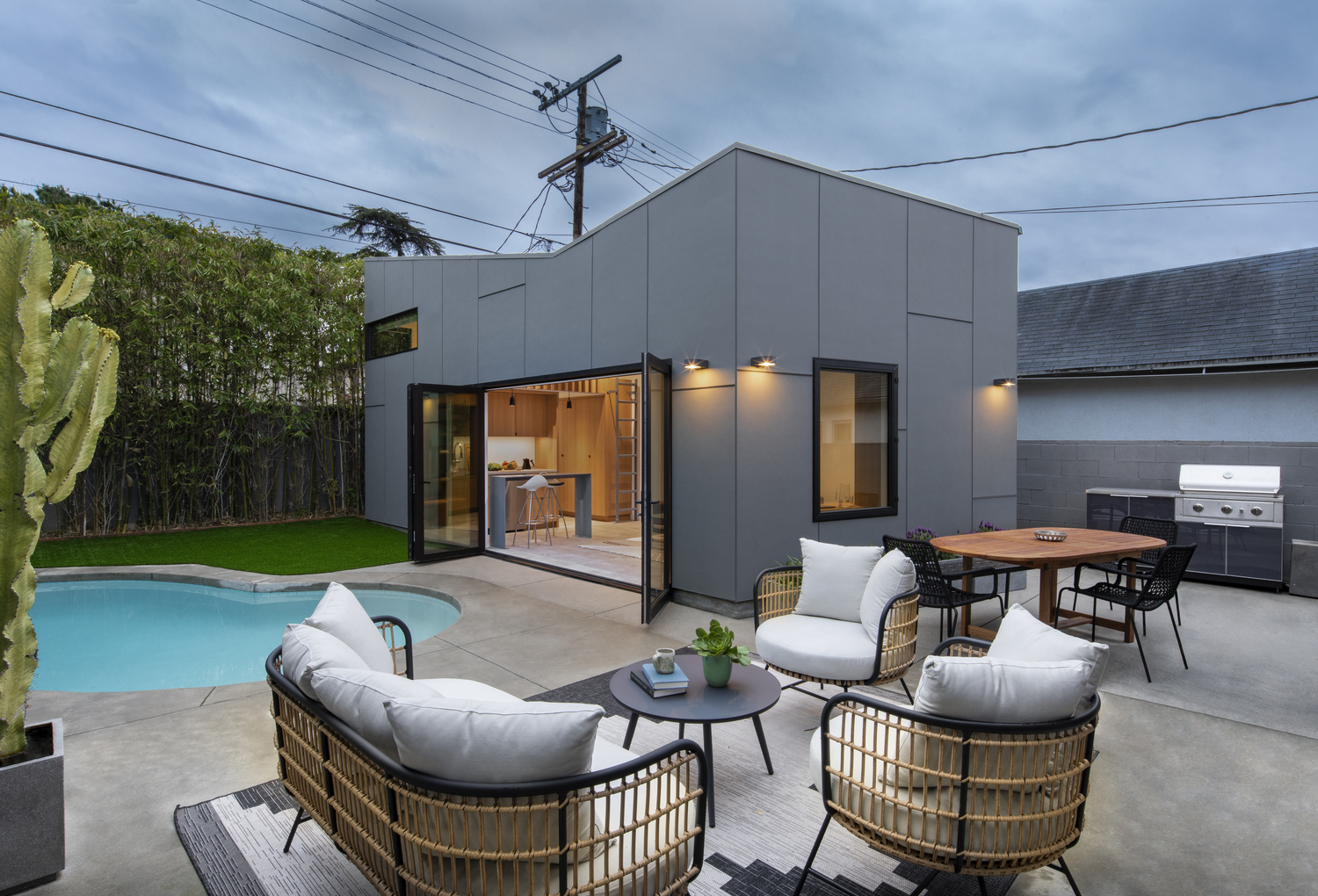
Author Sheri Koones has written many books on housing with a focus on prefabricated buildings, smaller houses and sustainability-minded homes, and she’s delivered many talks on these subjects. She found that, increasingly, the audience would hone in on the few accessory dwelling units, known as ADUs, that she had featured in her books, and she felt the natural progression would be to do a book dedicated to ADUs.
Koones titled the book, which will be released on March 19, “ADUs: The Perfect Housing Solution.” With photos and descriptions of 25 ADUs across North America and spotlights on trends and design features in ADUs — such as spiral staircases, water efficiency, skylights and “cool roofs” — she makes the case that ADUs can be attractive, comfortable spaces while also alleviating housing shortages.
Towns and villages on the South Fork, like in many regions across America, struggle with housing supply and affordability, but wish to retain the character of their downtowns and neighborhoods. Municipalities here and farther afield are now allowing, and in some cases incentivizing, homeowners to build ADUs as an alternative housing solution to dense multifamily developments.
ADUs may be attached or detached apartments, sometimes located in a converted garage or over a garage. They can take on different forms, but what they have in common is they each have a kitchen, sleeping area and bathroom separated from the main dwelling on the property.
Koones, of Greenwich, Connecticut, points out in the book that the most positive financial factor in building an ADU is that the land is free, and land is often one of the costliest parts of any construction.
She explained that in some towns, ADUs can be rented out at market rate, but in many cases they are built for multigenerational housing, where parents build an ADU for their adult children who can’t afford to buy a home where they grew up. In other situations in her book, it is the parents who move into an ADU because they wanted to downsize while staying close to family. Some homeowners build ADUs as a retirement plan, so they can live in the ADU and rent out their house for income.
“I know that there’s some resistance in some areas, even in Greenwich, about having ADUs on their property, but it’s kind of a win-win situation for everybody because in some cases, people are just making extra money, which is a good thing,” Koones said. “And in addition, it’s preventing some towns from putting in multiplexes that would be much more offensive to the residents than having an ADU, which is, for the most part, hidden from the street. And they really don’t bother anybody or change the look of the town.”
Some municipalities on the East End permit ADUs only if both the main house and ADU are occupied by year-round tenants — neither rented out seasonally or short-term — and if the ADU is offered at an affordable rate to income-qualified residents.
“I would guess that there’s a lot of people in the Hamptons that don’t need the extra money. But this is an opportunity for them to rent it to somebody who actually needs housing,” Koones said.
Her book includes both custom-built and prefabricated ADUs, and she noted that in some municipalities, architects have made plans available to any homeowners who apply for ADU permits.
“You can buy plans that are already established as ADUs,” Koones said. “There are a lot of those plans available, and there are several ways to build them prefabricated.”
She said people always ask her what ADUs cost, and she explained that it all depends on whether they are prefabricated or built on-site and how elaborate they are.
Koones anticipates permitting for ADUs will become easier as municipalities ease up regulations.
“The codes are likely to change in the future,” Koones said. “I think ADUs are becoming so popular across the country, and in fact, North America, because they’re popular in Canada as well. So some people are building them really beautifully with the idea that some time in the future, they might decide to live there, and so they want it to be really well done.”
She added that many homeowners building ADUs are incorporating universal design features — meaning they will be accessible to their elderly parents or themselves when they get older.
Koones said she looked at more than 200 or 300 ADUs before settling on 25 to include in the book.
“My criteria was, of course, that they were attractive. Because if you show ugly ADUs, nobody’s going to be interested,” she said. “They had to be attractive, but they also had to be efficient and they had to look like they would work well for the situation that they were in.”